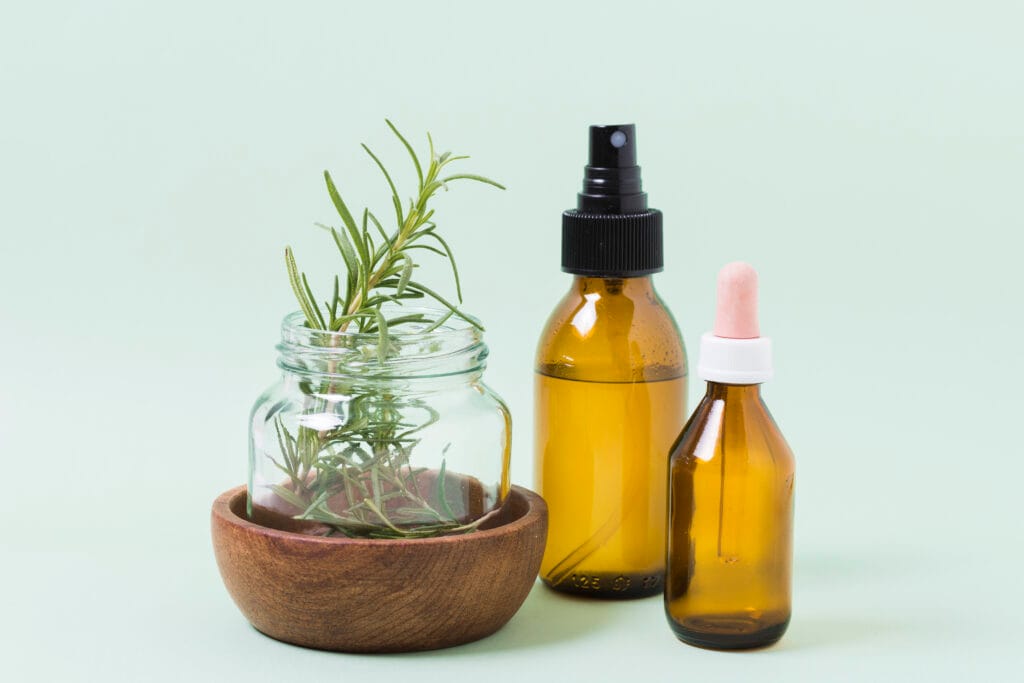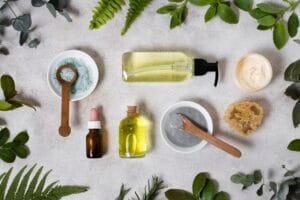How Can I Safely Use Essential Oils at Home?
- Published -
- Reading Time: 5 minutes
-
Written by - Rajat N
- Reviewed by - Dr. Josh Johnson

What Are the Safe Ways of Applying Essential Oils at Home?
The practice of using essential oils can be traced back thousands of years ago! These were used by Ancient Egyptians for both well-being and rituals. Fast forward to today, these oils have made their way back into a modern self-care routine. But here we have the million-dollar question: Are we using these in the correct way?
The truth is that essential oils can change your home and even your health, but only if done in moderation. Using them the wrong way can lead to allergic reactions, losing money, or worse, health problems. However, I do want to give you some peace of mind – by the end of this blog, you will not only learn how essential oils can be used in your life without risk but will also most likely show off your knowledge about aromatherapy to your friends.
Let’s explore the fragrant beauty of essential oils.
source – https://www.youtube.com/watch?v=ORISJjsCEro
Note: The video content is intended to provide supplementary information and a different perspective on the discussed topic. All information and advice presented in this article are based on expert guidance and review.
What Exactly Are Essential Oils?
By definition, essential oils are extracts obtained from plants which are concentrated. Not only do these contain a variety of scents, but the useful features of the plant as well. Each oil offers varying characteristics – from lavender’s calming aroma to peppermint’s refreshing zing. The matter of fact is these are extremely potent, which becomes a double-edged sword. While it is extremely beneficial, that also means it has to be used with key caution.
Why Does Safety Matter?
Essential oils can be too strong and may cause harm like:
Irritation to the Skin: Oils are intensified due to lack of dilution which can lead to the burning of sensitive skin.
Respiratory Problems: Excessive inhaling can result in overwhelming one’s senses.
Toxicity: Certain oils prove to be dangerous when consumed wrongfully.
Poison ivy is natural too, but you wouldn’t rub it on your skin!” Here’s a myth that needs to be immediately dispelled. “If it’s natural, it’s safe.” This claim is simply untrue.
1. Specific Therapeutic Oils: Differentiating Varieties IN truth
Recommendation: Seek out reputable brands that offer only therapeutic-grade essential oils.
Cure: Seek out oils that bear their botanical names (for instance, Lavandula angustifolia for lavender) and are devoid of fillers or undesired components.
Professional Opinion: According to Jane Howard, an aromatherapist, “A quality oil should smell fresh, not overly sweet or chemical-like.”
Research: I have a friend who suffered from a headache after using cheap lavender oil she bought online that was blended with synthetic substances and really wished i could have saved her.
2. The Art of Dilution: Less Is More
Myth: ‘You may use essential oils directly from the bottle’
Fact: Direct application of oils may harm your skin. Always combine them with a carrier oil like coconut, jojoba, or almond oil to ensure protection.
Mix one drop of essential oil with a teaspoon of carrier oil for topical use. Then, shake together the blend until they mix.
Personal Story: At one point I put straight tea tree oil on a blemish. Rather than removing it, it began to turn red and started peeling. Guess I learned that the hard way.
Pro tip: Patches need to be tested first. Use any new essential oil by mixing a drop into a diluted solution and applying it to your inner arm. Make sure to keep it there for 24 hours to see if there is any reaction.
3. Safe Inhalation: Breathe In, But Don’t Overdo It
Essential oils can act as a mood booster or aid in calming your nerves. However, like all things, moderation is important.
Solution: Diffusers can be used, only this time choose one that emits small controlled amounts of oil. Pat diffuse time decreases to thirty to sixty-minute intervals.
Expert Insight: According to Dr. Maria Lopez, a Holistic Wellness Expert, “Overuse can lead to headaches or nausea.”
Tip: If there are infants, pets, or any individual who has respiratory issues, do not diffuse oils around them.
4. Extra Cautions: Essential Oils and Children
Because children are particularly sensitive to essential oils and they can have adverse health effects, the following precautions with the oils should be heeded:
Avoid strong oils such as eucalyptus or even peppermint for children under 10.
Regularly dilute oils more than usual. Like one drop of oil diluted with ten ml of carrier oil.
Case Study: I Know a mother who used to diffuse eucalyptus oil in her toddler’s room which would give the child mild breathing problems. The pediatrician recommended using safer diffuser oils such as chamomile and lavender instead.
5. A Trollsy Issue: Internal Use
Myth: “Essential oils can be ingested without any concern.”
Fact: Essential oil consumption through ingestion is dangerous and should only be practiced under the supervision and guidance of a licensed professional.
Insight from the Expert: “The stomach is one of the most sensitive areas of the human body, and that is why oils are bad for the lining of the stomach and can also interact and potentially interfere with other medicine being consumed, so it’s best to avoid them,” Dr. Lopez adds.
Tip: Apply oils only externally unless a medically lit aromatherapist directs otherwise.
6. Keep Your Oils Fresh: Storage and Shelf Life
Light, heat, and air make essential oils age more quickly.
Tip: Keep the bottles in a place with minimal sunlight, away from extreme temperatures, and store them in dry glass bottles.
Solution: Always pay attention to the shelf life of the oils. For instance, citric oils are spoilage-prone and have a shelf life of only 6 to 12 months while patchouli can survive for years.
So personal anecdote: I recall placing my lemon oil on the sill of a hot window and within a couple of weeks it was “off” and lost its zing.
7. Mixing Oils: a Thoughtful and Viable Exercise
Indeed mixing oils can be enjoyable but it has some technicalities.
Trick: Start simple with two or three oils that go well together. For instance, lavender, bergamot, and ylang-ylang blend to make a mix that is calming.
Challenge: Avoid this by using blending charts or by consulting a guidebook for oil mixtures that do not match.
Auntie Jane was clear some oils magnify other oil properties while some act as antagonists to them.
8. Pets and Essential Oils: Safeguarding Pets
Tea tree and eucalyptus oil can be lethal to some animals.
Trick: Do not put oils where the animals will frequent or diffused oils in those regions.
Challenge: Most oils are too strong for pets but lavender or chamomile are safe when used very carefully.
One of my friends who owns a cat used tea tree oil by accident on her pet’s bedding, the kitty became lethargic and vomited. A vet visit cured the situation luckily.
9. Debunking More Myths: Essential Oils Edition
Supposed fact: “Essential oils heal every sickness.”
True fact: Although they aid in health, do not rely solely on them as replacements for medical treatment.
Supposed fact: “Using more oil will give better results.”
True fact: Excessive oil application will stress the body. Adhere to the advice at all times.
Myth: “Any oil is suitable for skin application.”
Fact: Certain oils, especially citrus oils, may lead to photosensitivity, thus increasing the chances of sunburn.
Conclusion: The Safe Path to Aromatherapy Bliss
If used with care, essential oils can be very beneficial to one’s well-being. To make them safe, choose the right oils, dilute adequately, and use them respectfully.
Remember: An expert can steer you in the right direction when in doubt. Aromatherapy is meant to be soothing, and so should the journey to discovering it. So yes, feel free to add lavender in your diffuser and enjoy the gentle warmth it provides, whilst resting in peace knowing you were safe.

